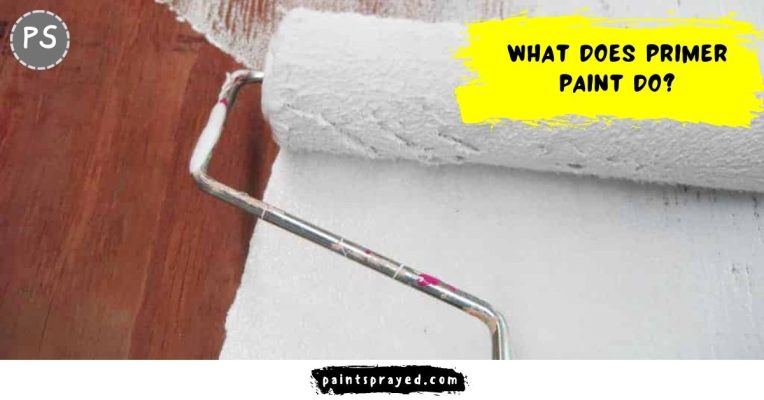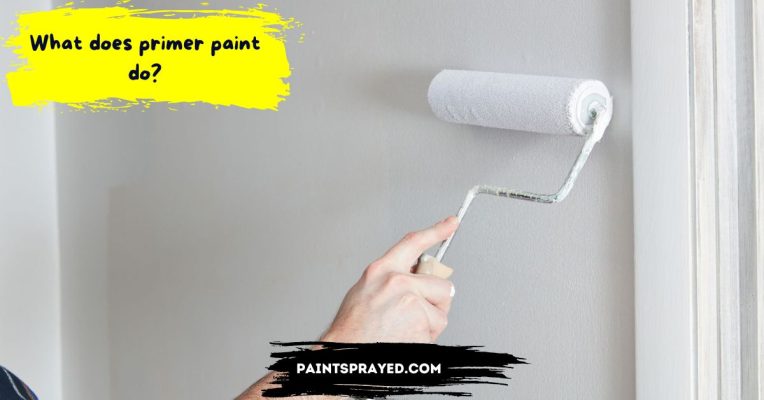Primer paint serves as a base coat that helps to prepare surfaces for painting.
It creates a smooth, even surface for the paint to adhere to, improves paint adhesion, and helps to extend the lifespan of the paint.
A professional painter has explained what does primer paint do and what it is in painting so if you are a beginner in painting then must read this guide.
Primer also helps to hide surface imperfections, seals porous surfaces, and provides a barrier against stains and odors.
Some primers also have special properties for specific surfaces, such as improved adhesion on metal or wood.
What does primer paint do?
Primer paint acts as a base coat that prepares a surface for painting and improves the adhesion and durability of the topcoat.
It helps to cover up previous colors or stains and provides a uniform surface for the topcoat.
And can also be used to block out stains, tannins, and other substances that can bleed through the topcoat.
What is Primer paint?
Primer paint is a type of paint used as a base coat to prepare a surface for the application of a topcoat of paint.
It provides a smooth, even surface for the topcoat to adhere to and helps to improve the overall durability and appearance of the final finish.
What is the purpose of primer for paint?
The purpose of primer paint is to:
- Prepare the surface for painting
- Improve adhesion of the topcoat
- Enhance the durability and longevity of the final paint job
- Provide a uniform base for the topcoat to better hide imperfections
- Seal porous surfaces to prevent stains and tannin bleed-through.
Is paint primer necessary?
Paint primer serves several purposes:
- Improves adhesion: Primer helps the paint adhere better to the surface, reducing the risk of peeling and chipping.
- Hides imperfections: It helps to cover up surface imperfections, such as cracks, knots, and stains, providing a smooth surface for the paint.
- Provides a uniform base: Primer provides a uniform base for the paint, which results in a more even and consistent finish.
- Enhances durability: Primer seals the surface and creates a protective barrier, helping to extend the life of the paint and prevent damage from moisture, UV rays, and other environmental factors.
- Increases color vibrancy: In some cases, primer can enhance the color vibrancy of the paint, making it appear brighter and more intense.
In summary, paint primer is necessary to ensure a smooth, long-lasting, and professional-looking paint job.
What happens if you don’t use primer before painting?
Without primer, the paint may not adhere well to the surface, resulting in an uneven or blotchy appearance.

The paint may also take longer to dry and may be more susceptible to chipping, fading, or peeling over time.
Additionally, if the surface is porous, the paint may soak in, resulting in a loss of color vibrancy and hiding power.
Furthermore, if the surface has any stains or existing paint, the primer helps to cover and even out the surface for a better painting outcome.
Primers also improve color accuracy by providing a neutral base for the paint to be applied over.
Can I paint over paint without primer?
Yes, you can paint over paint without primer, but it is not recommended as it can affect the final result.
If the surface is in good condition, you can paint over paint without primer, but the paint may not adhere well and may peel or chip over time.
Additionally, the new paint may not look even or vibrant and could end up fading or yellowing.
Primer helps to create a smooth, neutral surface for the paint to adhere to and can improve the longevity and appearance of the final result.
So, using a primer is recommended for the best results.
How many coats of primer?
Typically, 2 coats of primer are recommended for most surfaces.
The first coat is applied to even out the surface and creates a base for the second coat, which is applied to ensure adequate coverage.
If the surface is particularly porous or has heavy stains, more coats may be needed for proper coverage.
It is always best to follow the manufacturer’s instructions for the specific primer you are using as they can vary.
How long after priming can I paint?
Typically, you should wait 24 hours after priming before painting, to allow the primer to fully dry.
The actual drying time can vary based on the type of primer used and the conditions such as humidity, temperature, and airflow.

Always check the manufacturer’s instructions for specific drying time recommendations.
What happens if you use too much primer?
Using too much primer can lead to several issues:
- Increased drying time
- Change in color
- Weakened adhesion
- Bubbling or cracking of paint
- Increased risk of mildew growth.
Do you need 2 coats of primer paint?
It depends on several factors, such as the surface being primed, the type of primer used, and the desired end result.
In general, one coat of primer may be sufficient for a light color change or a well-prepared surface, while two coats may be necessary for a darker color change or a porous surface.
Consult the primer manufacturer’s recommendations and perform a spot test in an inconspicuous area before applying the primer to ensure optimal results.

Matthew Edward is a professional painter who loves to paint and wants to share useful tips and tricks which he had learned in many years of experience in painting. He also used many products that can be used for painting he has tried and tested each and every product to give an unbias opinion about it in his review. This blog is very useful for those newbies who want to learn painting without making mistakes.






